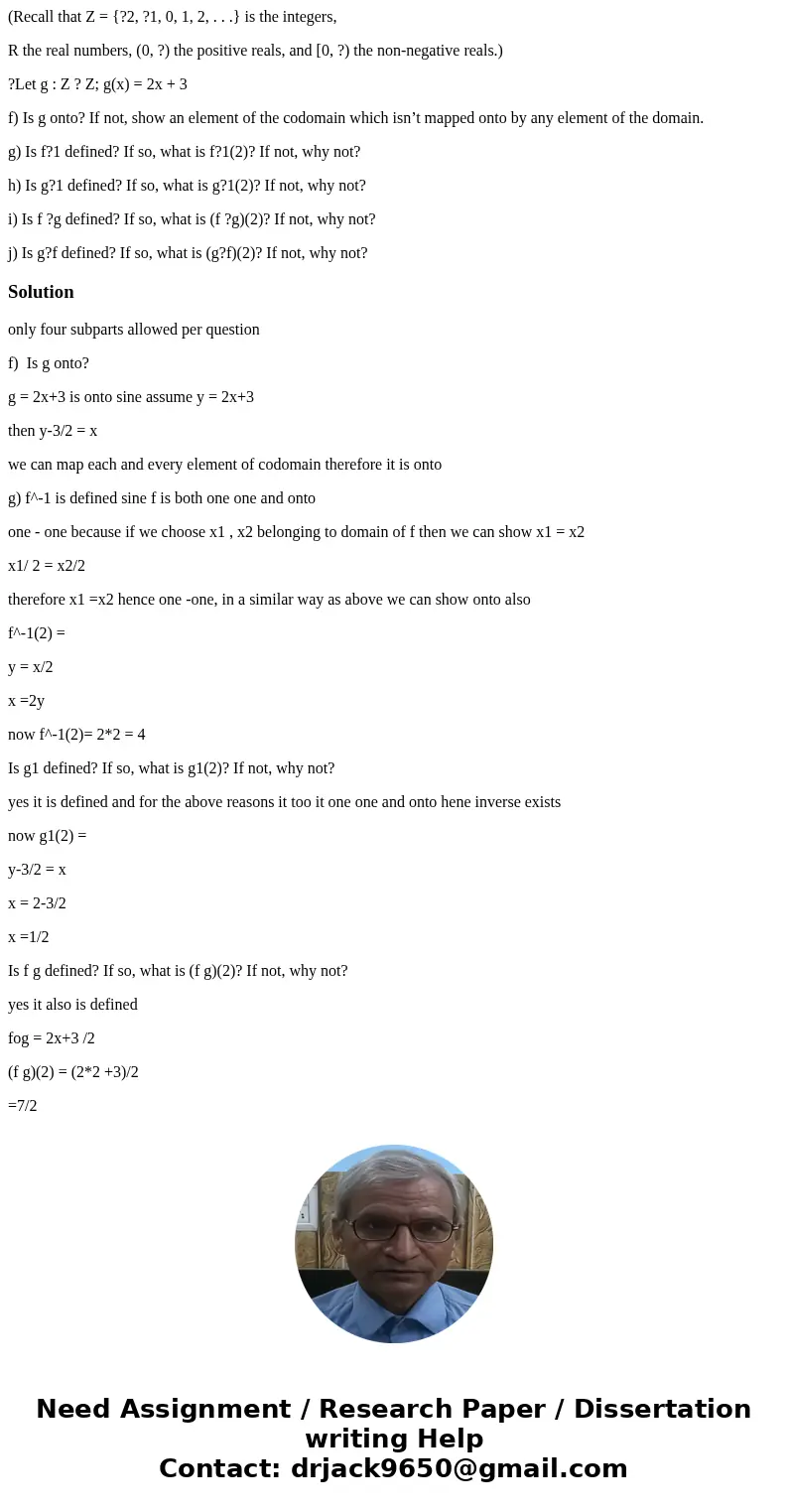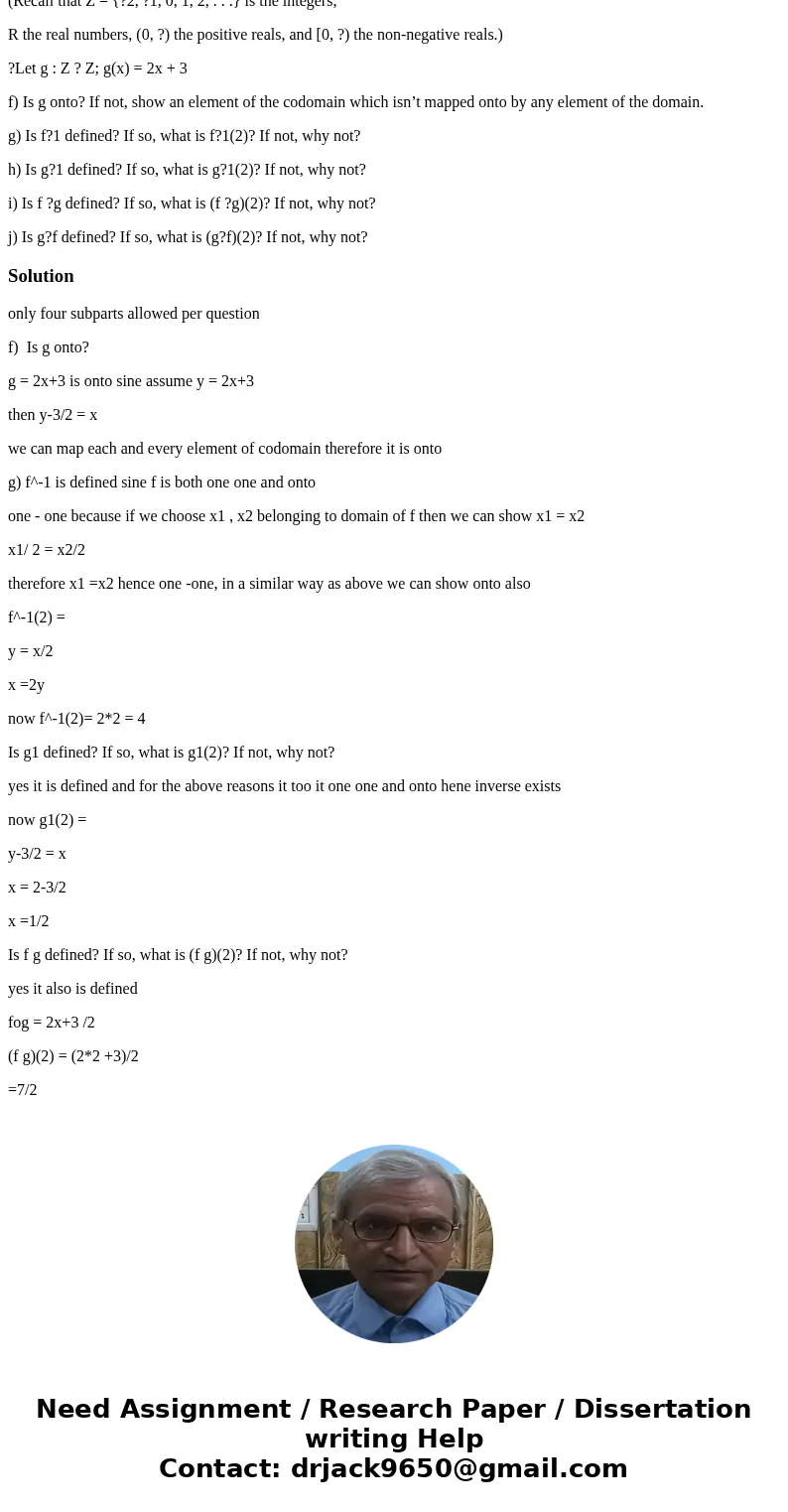Recall that Z 2 1 0 1 2 is the integers R the real numbe
(Recall that Z = {?2, ?1, 0, 1, 2, . . .} is the integers,
R the real numbers, (0, ?) the positive reals, and [0, ?) the non-negative reals.)
?Let g : Z ? Z; g(x) = 2x + 3
f) Is g onto? If not, show an element of the codomain which isn’t mapped onto by any element of the domain.
g) Is f?1 defined? If so, what is f?1(2)? If not, why not?
h) Is g?1 defined? If so, what is g?1(2)? If not, why not?
i) Is f ?g defined? If so, what is (f ?g)(2)? If not, why not?
j) Is g?f defined? If so, what is (g?f)(2)? If not, why not?
Solution
only four subparts allowed per question
f) Is g onto?
g = 2x+3 is onto sine assume y = 2x+3
then y-3/2 = x
we can map each and every element of codomain therefore it is onto
g) f^-1 is defined sine f is both one one and onto
one - one because if we choose x1 , x2 belonging to domain of f then we can show x1 = x2
x1/ 2 = x2/2
therefore x1 =x2 hence one -one, in a similar way as above we can show onto also
f^-1(2) =
y = x/2
x =2y
now f^-1(2)= 2*2 = 4
Is g1 defined? If so, what is g1(2)? If not, why not?
yes it is defined and for the above reasons it too it one one and onto hene inverse exists
now g1(2) =
y-3/2 = x
x = 2-3/2
x =1/2
Is f g defined? If so, what is (f g)(2)? If not, why not?
yes it also is defined
fog = 2x+3 /2
(f g)(2) = (2*2 +3)/2
=7/2


 Homework Sourse
Homework Sourse